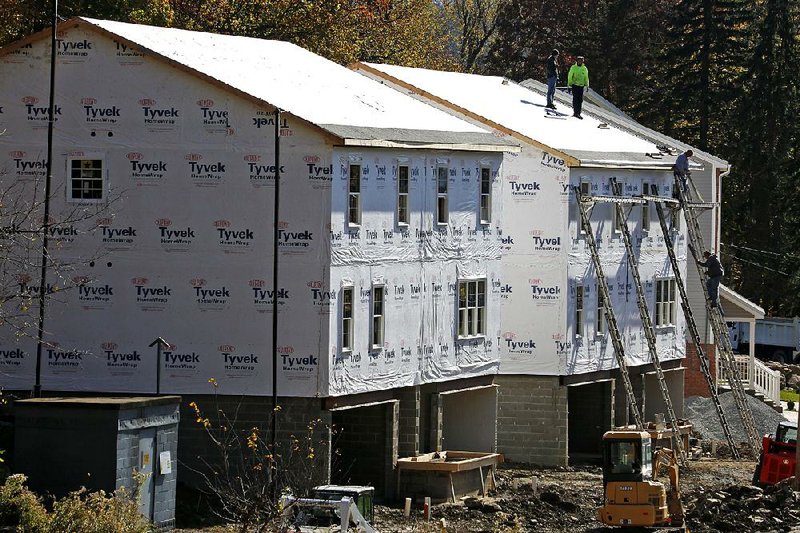WASHINGTON -- U.S. builders increased home construction in December, led by a surge of apartment building, while construction of single-family houses lagged.
Housing starts jumped 11.3 percent last month, to a seasonally adjusted annual rate of 1.2 million, the Commerce Department said Thursday. The figures are volatile month to month: Starts plummeted in November after a big gain in October. Apartment construction soared 53.9 percent last month, while single-family housing starts fell 4 percent.
The figures cap a solid 2016 for home construction: Developers started work on the most new houses and apartments since 2007, the year the recession began. Single-family home building increased 3.9 percent and apartment building was 10.3 percent higher.
The report adds to other recent evidence that home sales and construction have largely weathered an increase in mortgage rates since the fall. Steady job creation and some early signs of wage gains have made it possible for more Americans to afford to buy.
Still, the housing market faces challenges this year that could thwart further growth. The Federal Reserve may continue pushing up the short-term interest rate it controls, leading to higher borrowing costs. And with relatively few homes on the market, buyers have fewer choices, pushing up prices.
Building permits, a sign of future construction, slipped 0.2 percent in December. Permits for single-family homes rose, however, while apartment permits dropped.
Higher mortgage rates may weigh on home purchases in the coming months. Sales of existing homes reached the highest level in nearly a decade in November, yet fewer Americans signed contracts to buy homes that month, suggesting sales could soon slow. Signed contracts are usually followed a month or two later by a final sale.
Mortgage rates have dropped for the past two weeks, after increasing quickly after the election in anticipation of faster growth and inflation. The average 30-year fixed rate mortgage fell to 4.12 percent last week, according to mortgage buyer Freddie Mac, down from 4.2 percent the previous week.
Still, that's far higher than the 3.65 percent average rate for all of 2016.
Confidence among U.S. homebuilders fell in January from an 11-year high, suggesting optimism has plateaued after Donald Trump's election victory, a report from the National Association of Home Builders/Wells Fargo showed Wednesday.
The builder sentiment gauge fell to 67 from a revised 69 in Dec.; readings below 50 indicate respondents report poor market conditions.
Even with the January decline, the jump in confidence since Trump's election in November indicates homebuilders expect the president-elect and new Congress to lower regulatory barriers to developing and buying homes. At the same time, rising mortgage rates may temper confidence in the real estate industry and damp sales in the coming months. More broadly, the optimism mirrors that of other sectors and of consumers, who see Republican policies strengthening the economy.
"NAHB expects solid 10 percent growth in single-family construction in 2017, adding to the gains of 2016," Chief Economist Robert Dietz said in a statement. "Concerns going into the year include rising mortgage interest rates as well as a lack of lots and access to labor."
Information for this article was contributed by Christopher S. Rugaber of The Associated Press and Austin Weinstein of Bloomberg News.
Business on 01/20/2017

